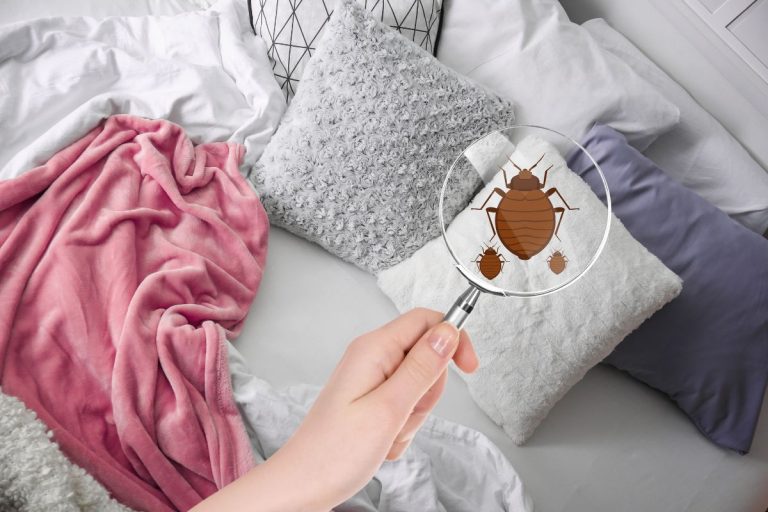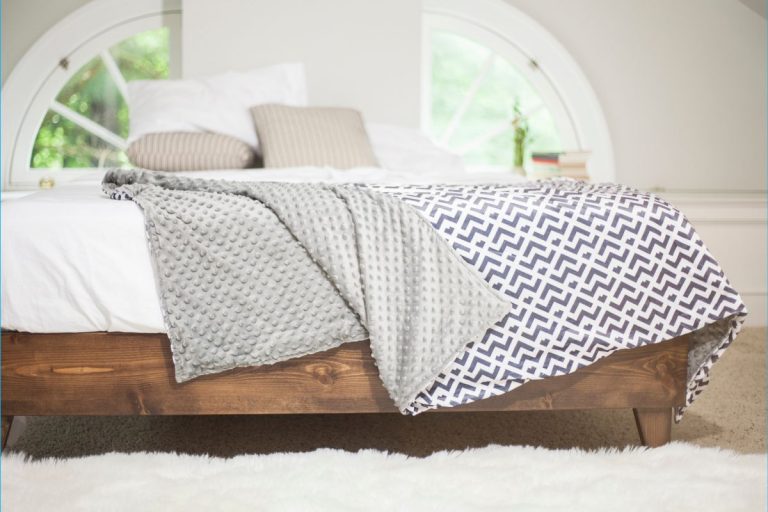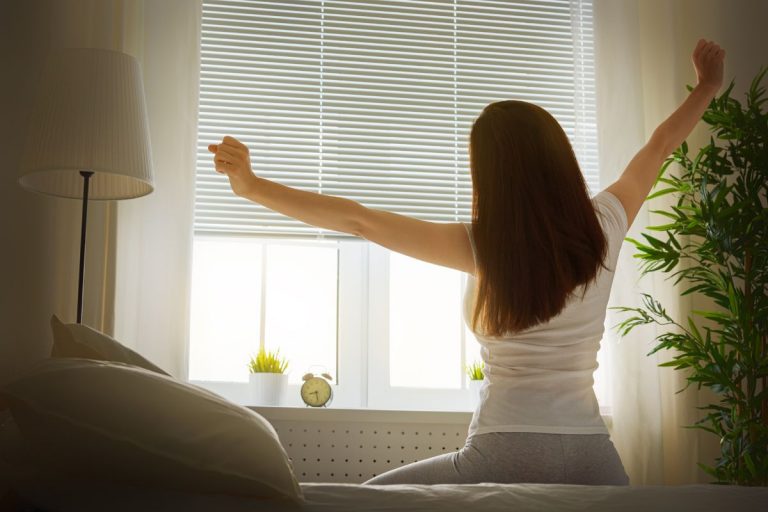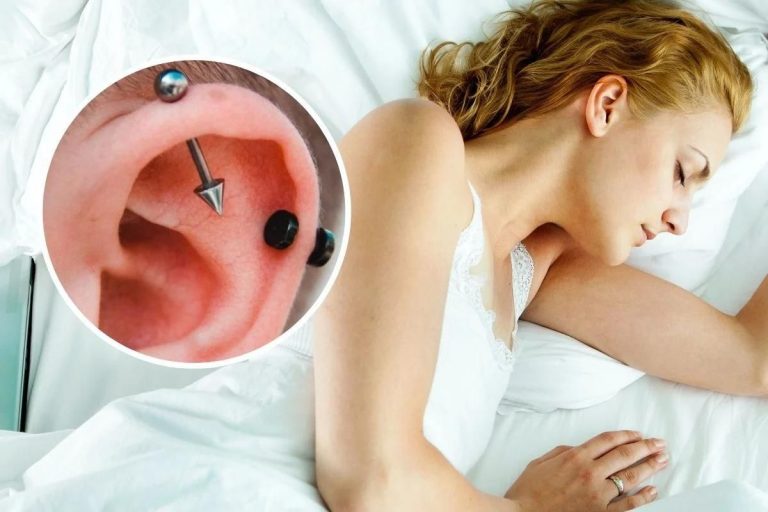Mattress covers are a useful tool to preserve your mattress’s integrity without harming its efficacy.
A mattress cover is often a waterproof or water-resistant cloth that is placed on top of a mattress to protect it from spills and stains. This is useful for people who have children or pets. But realistically, it’s helpful for everyone.
Mattresses—especially good ones—are expensive. Keeping them in top shape ensures you’ll enjoy them for many years to come.
The biggest benefit of using a mattress cover, however, is that it can help prevent the development of dust mites and their allergen excretion in your bedding. Dust mite allergies are very common among people with asthma.
In this article, we are going to see how to find the perfect cover mattress for you. We’ll also see why you should get one, no matter what.
Why Mattress Protectors: Is It Necessary?
Mattress covers are an effective and inexpensive way to preserve your mattress. They are easily one of the best purchases you can make to safeguard your investment. That’s right, mattresses are an investment.
Sleep is crucial for a healthy lifestyle. Everything else you do pales compared to sleep to improve your life. It’s so important that Harvard has an entire department dedicated to the science of sleep medicine.
When sleep is compromised, life suffers. Long-term lack of quality rest leads to many problems that are both physical and psychological. Examples are a sense of fatigue and memory loss. Long-term effects of insufficient sleep include increased risk of obesity and high blood pressure, as well as type 2 diabetes.
So, it’s important to buy a high-quality mattress. And since these are expensive, you want to keep them in great condition. Increasing a mattress’ lifespan is great because it keeps them feeling like they are new for longer, prevents waste, and saves you money in the long run.
Mattress covers do exactly that.
Plus, they are way easier to maintain than mattresses. When your cover gets dirty, toss it into the washing machine. Bam, you’re done. Quick and easy.
But what do you do when your mattress gets dirty?
Vacuum it and clean it in place. It’s not as thorough nor as simple as using a washing machine. Plus, dirt accumulates in the places that are hard to reach. And using cleaning stuff on your mattress is not the best, anyway. You risk ruining the fabric.
A mattress cover will save you plenty of time and effort, while keeping your mattress fresh. There are minor downsides to cover, though.
Editor’s note: People often confuse mattress covers with mattress pads/toppers. The latter are used to improve the mattress’ comfort, while the former is for protection. We are talking about mattress covers here. We’ll still talk about the other 2 later in the article, so don’t worry.
What are you protecting your mattress from?
Let’s get into the specifics. When you put a cover on your mattress, you are protecting it from the following agents:
- Dust mites: Dust mites are microscopic bugs that feed on dead skin cells. They excrete proteins, which can cause allergic reactions—especially in people with asthma or dust allergies. Mattress covers keep your mattress free of these allergens and prevent them from being trapped underneath the sheet where they cannot be vacuumed away easily.
- Stains: Even if you have a protective sheet, accidents happen. Spills from food and drink are inevitable if you have children or pets—or just a big party with friends. A mattress cover will protect your bedding from spills that could otherwise lead to stains on the surface of your mattress. This way, it’ll remain as pristine as possible for longer.
- Allergens: Dust mites are not the only source of allergens in your bedding. Many people have adverse reactions to pet dander, pollen, and dust particles that accumulate on mattresses over time—especially if you don’t vacuum them regularly. A mattress cover can help prevent these allergens from circulating inside your bedroom by trapping them underneath itself where they are difficult to access.
- Odor: A properly made mattress will not emit odors, but you can never be too sure about what’s inside it. Should your mattress absorb unpleasant smells over the years, a cover is an easy way to get rid of them without having to replace or clean it in any other way. You can just remove the cover and put it in your washing machine.
For example, if you have children or pets, it’s a must. But even if you don’t, there are still some interesting reasons mattress covers should be part of your bedding regimen.
Are there Downsides to Mattress Covers?
Like everything in life, mattress covers have their downsides. In fact, let’s start with the biggest downside: they can get boiling. This happens mostly with non-breathable covers, so get one that is breathable.
Another flaw of some models is their noise. There are covers that are loud when you move on top of them. This happens because of the waterproofing material inside them. Unfortunately, it’s the tradeoff for peace of mind in keeping your mattress protected by spills.
Lastly, they can be uncomfortable. Unlike toppers, that improve the mattress’ comfort, covers are there only to protect your mattress. There are models that do both, but you should separate products if comfort is your priority.
Mattress Covers: A Quick Buying Guide
When buying a mattress cover for yourself, here is what you need to keep in mind:
Size
Mattress covers come in many sizes, which can range from twin to California king. You should buy a cover that fits your mattress exactly or is slightly bigger than the dimensions of your bedding.
Thickness
Most manufacturers offer multiple levels of comfort with their products—ranging from three millimeters (lightweight) to seven millimeters (heavy-duty). The choice depends on your preferences and budget. Some people prefer the heavier ones as they provide better back support, but others find them a little uncomfortable.
Waterproof
A good mattress cover should be waterproof or water-resistant. If your chosen product is not, you’ll need to buy a separate one that meets this criterion. This is especially important if you have kids and pets who can spill food and drinks on the bedding. Cleaning stains from a mattress is way harder than from a mattress cover, since you can wash the latter in the washing machine.
Breathability
Breathability is an important factor to consider, especially in the summer months. If your mattress cover does not allow for airflow and ventilation, it will get boiling underneath you while you sleep—leading to sweating and discomfort.
Hypoallergenic
Purchasing a cover that is hypoallergenic is a must. If you suffer from allergies, this is a must-have feature for your mattress cover as it will prevent allergens and dust mites from accumulating inside of it. It’s also very important if you have pets or children as they can carry pet dander and pollen on their skin that may cause allergic reactions in some people.
Type
There are 3 types of mattress protectors: zippered, fitted, and strapped. You can choose among them depending on your preferences and budget. Zippered covers are the most expensive, but they also provide better protection for allergens and dust mites, as they cover the mattress’ entire surface area. Fitted ones, as their name suggests, fit like a fitted sheet over your bedding—and some go up to 18-inches in depth. They are usually less expensive than zippered covers, but do not provide the same level of protection. Last there are strapped protectors—these go over your mattress like a fitted sheet, but strap underneath to prevent them from slipping off during sleep. Their biggest flaw is that they can be uncomfortable if you move around much.
Price. Price can be a decisive factor when choosing between different models of covers. But if money isn’t too much of a concern, it’s best to choose the highest quality product you can afford. This way, your mattress will be protected for longer—saving your money in the long run. Luckily, you can get some excellent covers at a very good price.
Mattress Covers Alternatives
Mattress covers are a substantial investment. But you can also opt for other types of bedding to protect your mattress. If you’re looking for something that’s both affordable and protective, an allergy-proof pillow is a good option—especially if you have roommates or kids who sleep in the same room as yours.
Mattress Pads
Pads are another excellent alternative for your mattress. Someone usually fits and design these to keep any liquids from penetrating through the top of it. However, most don’t have a waterproof material inside them—and they’re only recommended if you’re looking for something that’s affordable but not necessarily protective.
They offer some level of protection, but only for the occasional spill. If you’re looking for full-blown mattress protection, then covers are the way to go.
There is a 3rd option though. You can combine pads and protectors to get the benefits of both. If you choose to go this route, place the topper on top of the mattress, and then the cover. This way, you get the best of both worlds.
Mattress Toppers
These are great for adding an extra layer of comfort and softness, but they do not offer any protection against spills or stains. If you’re looking for something that feels like a memory foam mattress, then to this is definitely your best bet.
Toppers and pads are quite similar, with the former being a thicker version of the latter. The major difference between the two is that toppers are made from quilted cotton, while pads have a smoother surface.
Topper covers are also available—and they’re usually waterproof or water-resistant. However, you can’t wash them in your washing machine like regular mattress protectors. You need to use gentle detergents and spot treatment to keep them clean.
Also Read: Mattress Pad, Topper, or Protector: Which Is Best for Me?
Conclusions
Mattress covers aren’t strictly necessary, but they are extremely helpful. You can get by without one if you so wish. But they’re such an inexpensive and useful tool you should consider them.
Mattresses—even cheap ones—are way more expensive than covers will ever be. It makes sense to get covers to protect your investment. But if you keep your room clean and perform routine maintenance on your mattress, mattress toppers are more than enough.
Still, it’s no fun to be assaulted by bed bugs at night. Covers solve these red beasts crawling around you.
You should also consider the potential downsides of covers. Some people find they disrupt sleep because they twist and bunch with body movements. Also, if you buy one that is not breathable, it will probably get hot on the warmest day of the year.
As long as you buy a cover that is breathable and waterproof, you will be fine.




